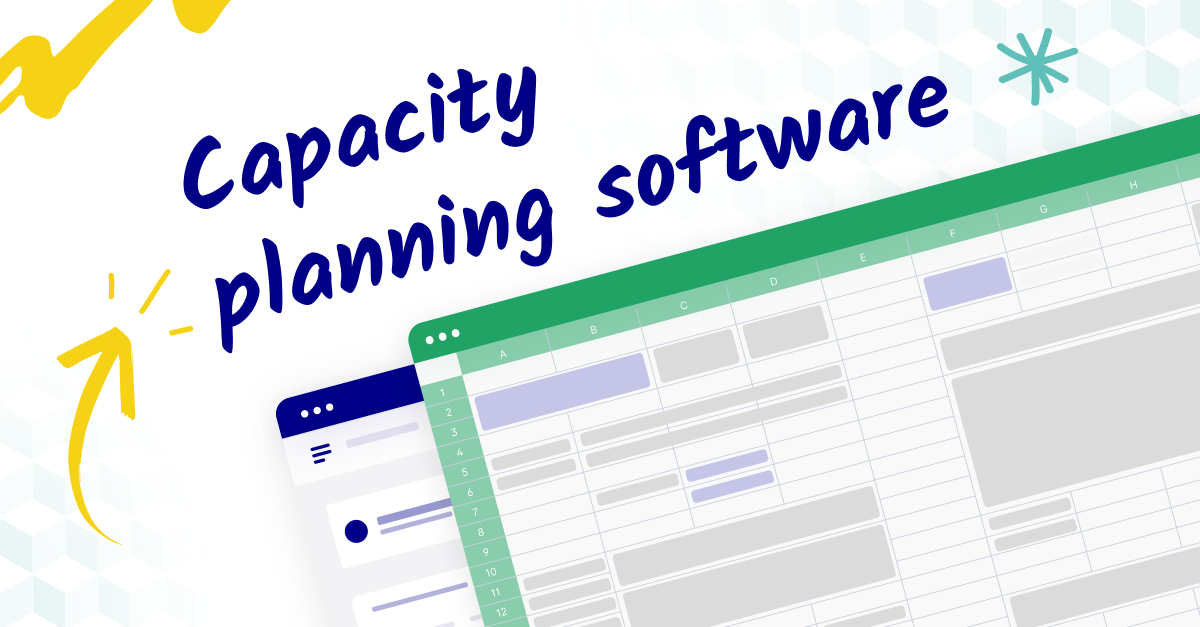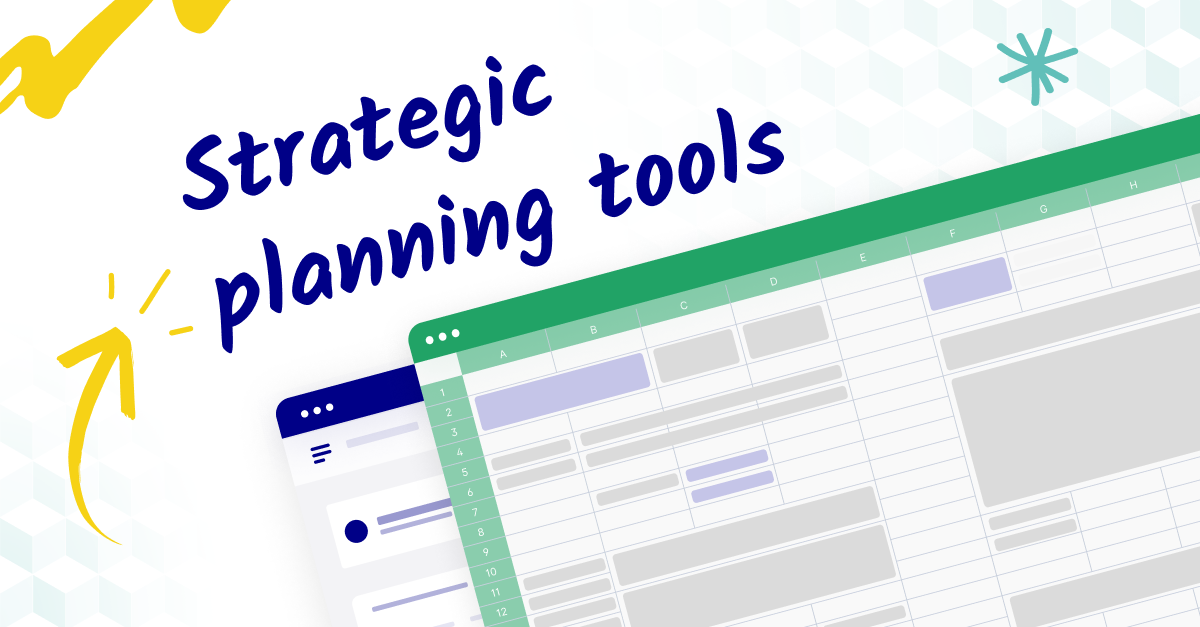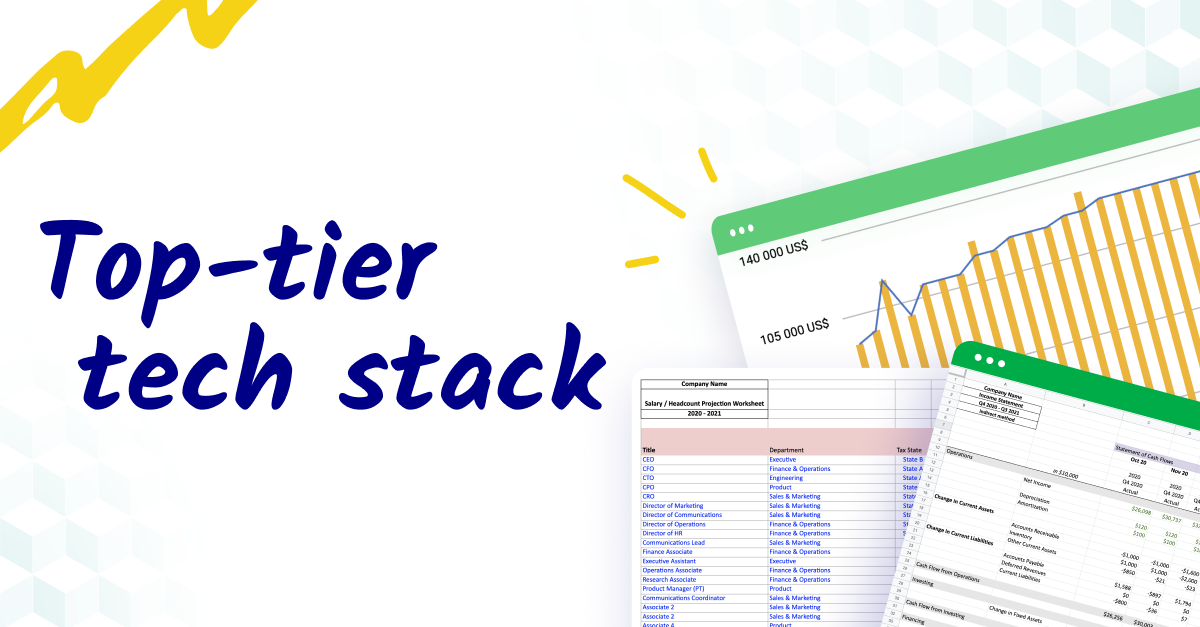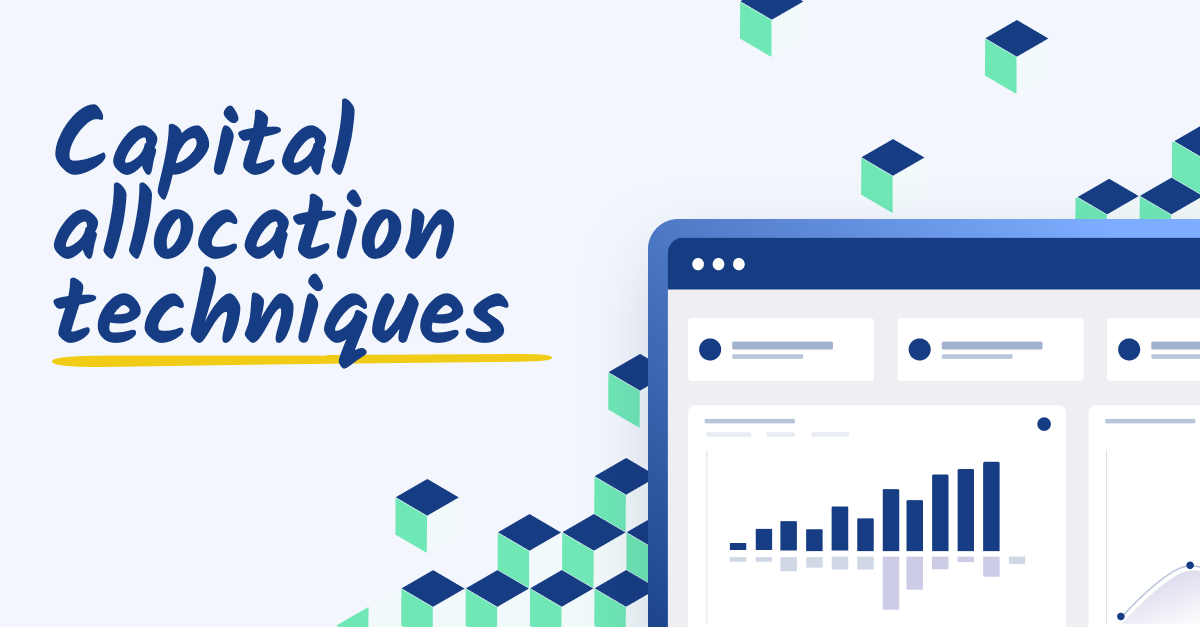For finance leaders looking to gain a competitive edge while ensuring growth and stability, an effective capacity planning process is crucial.
This blog explores the importance of capacity planning software, its tangible benefits, key features tailored for FP&A, and common pitfalls to avoid.
Let’s get started.
Contents
Sign up for The Finance Fix
Sign up for our bi-weekly newsletter from serial CFO and CEO of Cube, Christina Ross.
The importance of strategic capacity planning
Capacity planning is a strategic process used to determine the resources (such as manpower, equipment, and facilities) required to meet future workload demands. The primary goal of capacity planning is to ensure that these resources are available at the right time and in the right quantity to meet the needs of the business while maintaining cost efficiency.
Capacity planning is a key tool for FP&A leaders, helping to ensure efficient resource allocation that's aligned with strategic goals. It balances the size of your team and the amount of work they need to do, helps you avoid overspending, and identifies opportunities for growth. It also prevents misallocation of funds and operational inefficiencies, protecting your company’s bottom line, and offers a structured approach to budget alignment, which is crucial for operational and financial health.
Moreover, capacity planning improves your project management and decision-making. With clear data on the financial implications of each choice, you can conduct strategic resource allocation, mitigate risks, and leverage new opportunities for financial advancement. For FP&A professionals, capacity planning is about leading with informed decisions that drive your business forward efficiently.
Many businesses use capacity planning software to assist in the process. A capacity planning tool gives you the insights and flexibility to make quick, well-informed decisions about resource allocation, allowing your financial strategy to stay adaptable and grow with your needs.
Benefits of capacity planning tools
Efficient resource allocation is critical for financial success, and capacity planning software is a game-changer for FP&A leaders seeking that efficiency.
It's not just about having the right resource management tools—it's about the transformative impact these tools have on financial planning and operational execution. From boosting forecasting precision to fostering collaboration, the advantages of leveraging this software extend across a business.
Here are some of the specific benefits that make capacity planning software an indispensable asset:
1. Enhanced forecasting accuracy
The best capacity planning tools provide FP&A leaders with detailed data for precise forecasts. They allow for better anticipation of financial needs and the planning of revenue streams, resulting in stronger financial performance and informed planning decisions.
This level of detail extends beyond traditional forecasting, integrating variables such as market trends and seasonality to provide a multifaceted view of potential future scenarios.
2. Streamlined operations
The software identifies opportunities to reduce overhead, allowing operations to run leaner without compromising output. This streamlining results in significant cost savings, allowing for the reallocation of funds to drive growth and improve operational efficiency.
Streamlining also frees up valuable time for finance teams, enabling them to focus on strategic tasks rather than get bogged down by routine operational bottlenecks.
3. Thoughtful budget allocation and investment
With its robust analytical capabilities, resource capacity planning software assists in smarter budget allocation and resource planning. It helps in directing funds to areas with the highest strategic impact, supporting wiser capital investments and eliminating wasteful spending.
Plus, by providing scenario analysis, it equips leaders with the foresight to allocate budgets in a way that maximizes impact and supports long-term strategic objectives.
4. Improved collaboration
By offering a unified view of financial and operational data, the software enhances collaboration and project scheduling across different departments. This ensures that all team members are working with the same information, aligning their efforts with the wider financial strategy and contributing to a more integrated approach to achieving company goals. Such integration fosters a culture of transparency and shared responsibility, which is essential in driving company-wide success.
5. Dynamic adaptability to market changes
In fast-paced markets, the ability to quickly adapt to changes is crucial. A robust resource management tool allows businesses to respond swiftly to market demands or changes in supply chain dynamics, ensuring financial plans remain relevant. This adaptability extends to real-time adjustments in resource allocation, enabling companies to maintain operational efficiency and competitiveness despite external fluctuations.
6. Optimized workforce management
The top capacity planning tools often include features for workforce planning, enabling more effective project management of labor costs and productivity. By matching workforce levels to the demands of the business, finance leaders can optimize labor spend, improve resource planning, and boost their bottom line.
Such tools can also contribute to employee satisfaction by ensuring workloads are balanced and resources are fully utilized without being overextended.
7. Data-driven decision making
The software's analytics and reporting capabilities empower FP&A leaders with data-driven insights, allowing for more informed decision-making. This translates into financial strategies that are based on solid data rather than intuition. The ability to visualize data through interactive dashboards and reports simplifies complex information, making it actionable for financial leaders looking to drive their organization's strategic direction.
8. Sustainability and growth
Effective capacity planning contributes to the sustainability of business operations by ensuring that growth is managed within the constraints of available resources. It allows for the identification of when to scale operations up or down, leading to more sustainable growth trajectories. This strategic management of growth not only protects the business from resource overstretch but also ensures that expansions are strategically timed and based on accurate projections.
Key features of effective capacity planning tools
For FP&A leaders, capacity planning software is not just about managing the numbers; it's about having a suite of tools that provide clarity and insight for strategic project management.
Let's explore the key features and functionalities that make this software a vital part of the financial planning and analysis process.
1. Demand forecasting
A central feature of the best capacity planning tools is their ability to predict future capacity needs and improve project management. Through demand forecasting, FP&A professionals and project managers can anticipate the resources required to meet business objectives, ensuring that you're prepared for growth without overcommitting resources.
2. Scenario planning
The software enables scenario planning, allowing you to prepare for multiple financial outcomes. This means you can model various business scenarios, assess potential impacts on your finances, and make contingency plans. This forward-looking approach helps you mitigate risks, plan future projects, and empowers you with the agility to navigate financial uncertainties.
3. Resource utilization tracking
Effective resource management is critical, and resource capacity planning software helps you understand your current resource utilization. It provides detailed tracking and reporting on how resources are currently used, helping to identify underutilization or bottlenecks. This insight is crucial for maximizing the efficiency of your existing assets before considering additional investments.
4. Integration capabilities
To create a cohesive financial plan, integrating disparate data sources is crucial. Resource management software often comes with the ability to consolidate financial data from various systems, like ERP and CRM. This integration creates a single source of truth, streamlining the planning process and improving accuracy across financial operations.
5. Real-time visibility and reporting
The best capacity planning tools offer real-time visibility into resources and performance metrics. This enables FP&A leaders to make swift decisions based on current data, rather than waiting for end-of-period reports. Real-time reporting can highlight issues as they arise, allowing for immediate course correction and ensuring that resource allocation aligns with dynamic project requirements.
6. Customizable dashboards
Customization is key for FP&A tools to meet the unique requirements of your business. Capacity planning software with customizable dashboards allows users to focus on the metrics that matter most to their role and objectives. These personalized views can enhance user engagement with the system and improve the relevance of insights drawn from the data.
7. Workflow automation
Workflow automation is a significant feature that can save time and reduce errors in financial planning and resource scheduling processes. By automating routine tasks, the software can help ensure consistency in data handling and free up human resources for more strategic, high-value activities. It also helps in standardizing processes across departments, contributing to overall operational efficiency.
Pitfalls to avoid when selecting capacity planning tools
Choosing the right capacity planning tool is a critical decision for FP&A leaders, and it's easy to get caught up in the array of options. However, there are common missteps that you should be wary of to ensure that your chosen solution truly aligns with your organization’s needs.
1. Overlooking customization options
One size does not fit all when it comes to resource planning software. Avoid solutions that offer little to no customization, as they may not align with your unique business processes and task management. Ensure the software can be tailored to fit the specific demands of your organization to get the most value from your investment.
2. Neglecting user-friendliness and accessibility
If the software isn't user-friendly, it won't be used to its full potential. An accessible and intuitive interface is crucial to ensure that your team members can adopt the project management tool effectively. Don't overlook the importance of a good user experience—your staff's ability to use the software comfortably will greatly impact its success.
3. Underestimating the need for scalability
The capacity planning tool you choose should grow with your business. Neglecting scalability can lead to costly upgrades or the need to switch systems down the line. Project managers should look for software that can accommodate an increasing number of users, more complex data sets, and more intricate planning scenarios.
4. Ignoring the track record and reliability of the software provider
Finally, the credibility of the capacity planning software provider is paramount. Opt for providers with a proven track record of reliability and continuous support. Checking reviews, testimonials, and case studies can provide insight into the provider’s performance and the long-term viability of the software.
Steps to effectively implement capacity planning software
Successfully integrating a capacity planning tool into your business requires a strategic approach. Here’s how FP&A leaders and project managers can steer clear of common implementation pitfalls and set their teams up for success.
1. Assess your company’s unique needs
Begin with a thorough assessment of your company's specific requirements. Understand the nuances of your financial planning processes to ensure that the software you select can address your current challenges and future goals.
2. Involve stakeholders in the selection process
Including key stakeholders in the decision-making process not only fosters buy-in but also ensures that the software meets the diverse needs of all users. Encourage input from various departments to gain a holistic view of what features are most critical for your organization.
3. Plan for a seamless integration
A clear plan for integration is essential. Consider how the new capacity planning tool will interact with your existing tools and workflows. Anticipate potential issues and plan accordingly to minimize disruptions to your business operations during the transition.
4. Ensure adequate training and support
Post-implementation, sufficient training and support are vital to ensure your team can effectively use the new software. Project managers should choose a provider that offers comprehensive training materials and ongoing support to resolve any issues quickly, ensuring a smooth adoption curve and long-term success.
Conclusion: conquer capacity planning
Smart scaling through strategic capacity planning is not just a luxury but a necessity in the current business climate. The right capacity planning tool is essential for future-proofing your business, providing the agility and insight needed to navigate a rapidly changing economic landscape.
Want to learn how Cube can help your team members do just that and more? Request a free demo today.


.png)



.png)





